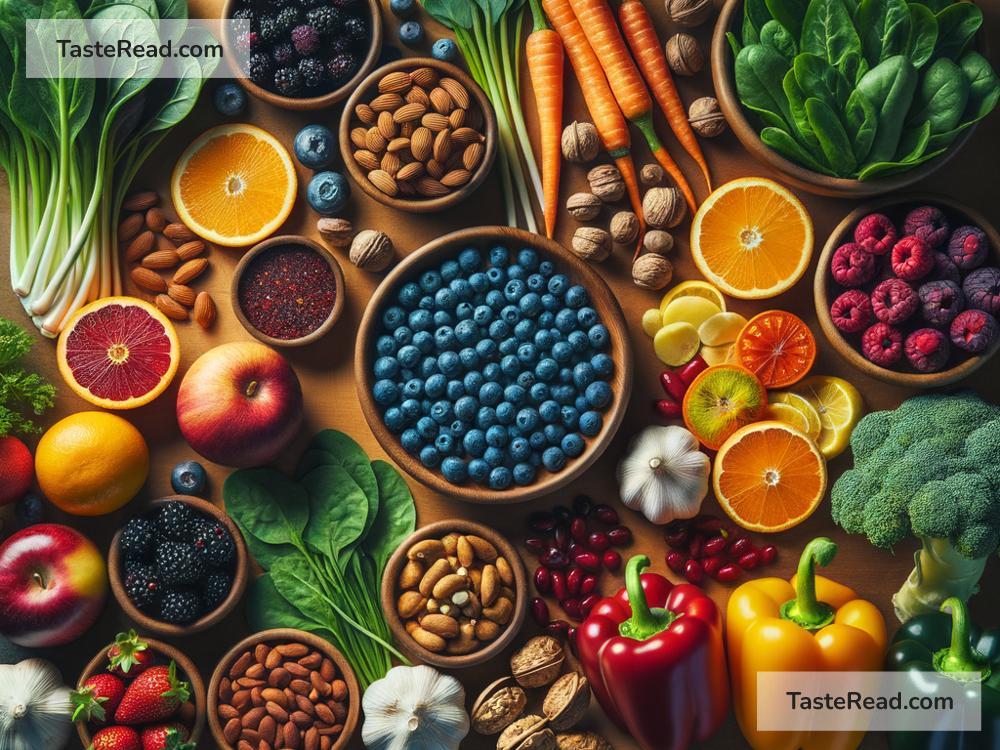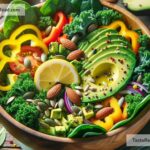Foods That Strengthen Capillaries: Eat Your Way to Better Circulation
Capillaries are the tiny blood vessels in your body that deliver oxygen and nutrients to your tissues. They form the bridge between the arteries and veins, ensuring that every little cell in your body is nourished. Keeping capillaries strong and healthy is essential for good circulation and overall health. Weak capillaries can lead to problems like bruising, spider veins, and poor blood flow. The good news? You can help strengthen your capillaries by eating the right foods!
In this article, we’ll explore simple, everyday foods that promote capillary health. These are delicious, nutrient-packed options that you can easily add to your meals. Let’s dive in!
Why Do Capillaries Need Strengthening?
Capillaries are delicate structures. Factors like aging, chronic health conditions, and poor nutrition can weaken them over time. When capillaries lose their strength or elasticity, blood circulation can be negatively affected. This can sometimes result in swelling, visible veins, or a slower healing process after injuries.
By eating foods that promote capillary health, you can protect their walls, improve their flexibility, and support better circulation throughout your body. Let food be your medicine!
Key Nutrients for Capillary Health
Before discussing specific foods, let’s talk about the nutrients that make a big difference in capillary strength:
- Vitamin C: Boosts collagen production, which strengthens capillary walls.
- Bioflavonoids: Work alongside vitamin C to reduce inflammation and maintain capillary elasticity.
- Vitamin K: Supports blood vessel health and prevents excessive bleeding.
- Antioxidants: Protect capillaries from free radical damage, which can weaken them.
- Omega-3 Fatty Acids: Promote healthy blood flow and reduce inflammation in blood vessels.
Foods That Strengthen Capillaries
Here are some foods you can eat to keep your capillaries happy and healthy:
1. Citrus Fruits – Packed with Vitamin C
Citrus fruits like oranges, lemons, limes, and grapefruits are rich in vitamin C, which is crucial for collagen production. Collagen acts as a structural support for capillaries, helping them stay strong and resilient.
How to include them:
– Drink freshly squeezed orange juice.
– Add lime or lemon slices to your water.
– Snack on grapefruit or use it in a salad.
2. Berries – Bioflavonoid Superstars
Berries like blueberries, strawberries, and blackberries are loaded with antioxidants and bioflavonoids. These compounds reduce inflammation and protect capillaries from oxidative stress.
How to include them:
– Add berries to your morning oatmeal or yogurt.
– Blend them into smoothies.
– Snack on them fresh or frozen.
3. Leafy Greens – Vitamin K Powerhouse
Spinach, kale, and other leafy greens are excellent sources of vitamin K. This vitamin helps prevent bleeding and promotes healthy blood vessel walls.
How to include them:
– Use spinach as a base for your salads.
– Include kale in stir-fries or soups.
– Add greens to your omelet or sandwiches.
4. Nuts and Seeds – Omega-3 Fatty Acids
Walnuts, chia seeds, and flaxseeds are rich in omega-3 fatty acids, which promote better circulation and reduce inflammation in blood vessels, including capillaries.
How to include them:
– Sprinkle chia or flaxseeds over cereal or yogurt.
– Snack on a handful of walnuts.
– Include nuts and seeds in homemade trail mixes.
5. Red and Orange Vegetables – Rich in Antioxidants
Sweet potatoes, carrots, and red peppers contain antioxidants like beta-carotene and other flavonoids. These antioxidants shield capillaries from degenerated damage caused by free radicals.
How to include them:
– Roast sweet potatoes or peppers for a side dish.
– Make carrot soup or include shredded carrots in salads.
– Snack on sliced red peppers with hummus.
6. Garlic – Improves Circulation
Garlic is a natural blood thinner that supports easier blood flow. It contains sulfur compounds that may boost capillary health and prevent blockages.
How to include it:
– Add garlic to your main dishes like pasta, soups, and stir-fries.
– Mix roasted garlic into dips and spreads.
– Use garlic powder as a seasoning.
7. Fish – Another Source of Omega-3 Fatty Acids
Fatty fish like salmon, mackerel, and tuna provide omega-3s that reduce inflammation and improve blood vessel function.
How to include it:
– Grill or bake salmon as a main dish.
– Include canned tuna or mackerel in sandwiches or salads.
– Add fish to pasta or tacos.
8. Dark Chocolate – A Sweet Source of Antioxidants
Dark chocolate, especially the kind that contains at least 70% cocoa, is a delicious treat that’s rich in flavonoids. These compounds improve blood flow and may help strengthen capillaries.
How to include it:
– Eat a small square of dark chocolate as a dessert after meals.
– Add cocoa powder to smoothies or coffee.
– Make homemade chocolate bark with nuts and berries.
Takeaway: Nourish Your Capillaries
Your body thrives when you nourish it with wholesome foods, and your capillaries are no exception. By incorporating nutrient-rich foods like fruits, vegetables, nuts, and fish into your diet, you can support strong, healthy blood vessels that keep your circulation running smoothly.
While eating the right foods is important, capillary health is also influenced by lifestyle habits. Staying hydrated, exercising regularly, and avoiding smoking also play significant roles in keeping your circulation and capillaries in top shape.
So, the next time you plan your meals, think about your capillaries—and choose foods that help them thrive. A simple tweak to your diet can make a big difference in your overall health.


